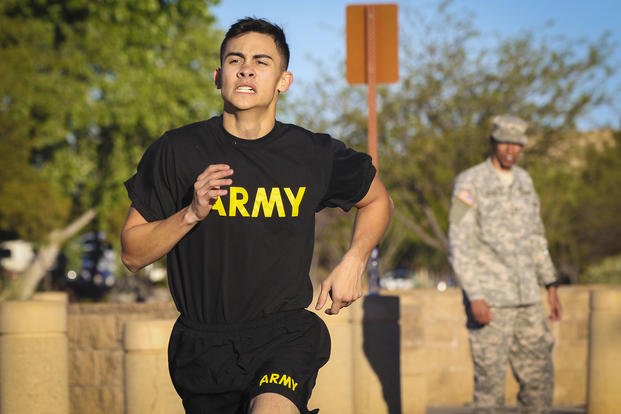If you have followed my writing, you will notice that my training recommendations suggest that you transition into a lifting cycle in the fall/winter period where the focus becomes gaining strength or mass and maintaining calisthenics and cardio.
This transition involves running fewer miles (but faster), swimming or biking more (nonimpact options) and adding weight to calisthenics movements.
As we make this seasonal change, we like to assess two things:
1. Determine current calisthenics and cardio cycle scores with timed runs, PT testing and timed swims.
2. Figure out our starting point for lifting weights, weight vest activities and load-bearing cardio.
During this last week of our spring/summer calisthenics and cardio cycle, we typically like to peak on the standard PT tests used by the military and special ops selection programs. These tests include the Navy Physical Screening Test used by Navy SEAL training candidates, Navy Diver, Navy EOD, Navy SWCC, and Navy Search and Rescue Swimmers.
Take an easy weekend of recovery and then, on the first day of the workout week, do the PST twice in the following way:
Double PST:
Swim: 500 yards
Transition: 10 minutes
Push-ups: 2 minutes
Rest: 2 minutes
Sit-ups: 2 minutes
Rest: 2 minutes
Pull-ups: max
Transition: 10 minutes
Run: 1.5 miles
Break: 10 minutes
Hydrate, then repeat in reverse order:
Run: 1.5 miles
Pull-ups: max
Sit-ups: 2 minutes
Push-ups: 2 minutes
Swim: 500 yards
This Double PST assesses both running and swimming cardio endurance as well as muscle stamina via the calisthenics. The second round helps the athlete understand the importance of fueling, hydrating and building a higher level of work capacity so that they're able to handle the added repetitions.
The difference between the first and second scores of the PST will indicate whether the candidate is progressing to the level of overall endurance, muscle stamina and work capacity needed for when they take the official PST during a normal, long day of training.
After an easy recovery day in the middle of the week, the next assessment is a series of lifts, weighted calisthenics and a ruck. These are the baseline lifts we use for our assessment at the start of the lifting cycle:
Weight vest pull-ups: 20 pounds
Bodyweight bench press: max reps
Deadlift: max weight for 3 reps
Back squats: max weight for 3 reps
Medicine ball overhead power throw: 20 pounds for max distance
Standing broad jump: max distance
Shuttle run: 300 yards (12 x 25 yards) for time
Kettlebell farmer walk: 2 x 44 pounds for time (2 x 25 yards)
Obstacle Course: for time
4 mile ruck: for time
Swim with fins: 1 mile for time
These strength, power, speed, agility, load-bearing and endurance testing exercises can be spread throughout the day in different sessions or broken up into two days if you prefer.
The goal is to just establish a starting point before starting the lifting cycle so we can progressively reintroduce these exercises throughout the cycle to build a more well-rounded tactical athlete.
We want to create a person who can perform all the elements of fitness required for a job in any of the tactical professions: strength, power, speed, agility, muscle stamina, endurance, mobility, flexibility and grip.
It is important to assess yourself on a regular basis. Otherwise, you are always guessing as to what your capabilities are and not how to progress further or hold steady to maintain what you need for the job.
Stew Smith is a former Navy SEAL and fitness author certified as a Strength and Conditioning Specialist (CSCS) with the National Strength and Conditioning Association. Visit his Fitness eBook store if you're looking to start a workout program to create a healthy lifestyle. Send your fitness questions to stew@stewsmith.com.
Want to Learn More About Military Life?
Whether you're thinking of joining the military, looking for fitness and basic training tips, or keeping up with military life and benefits, Military.com has you covered. Subscribe to Military.com to have military news, updates and resources delivered directly to your inbox.


















